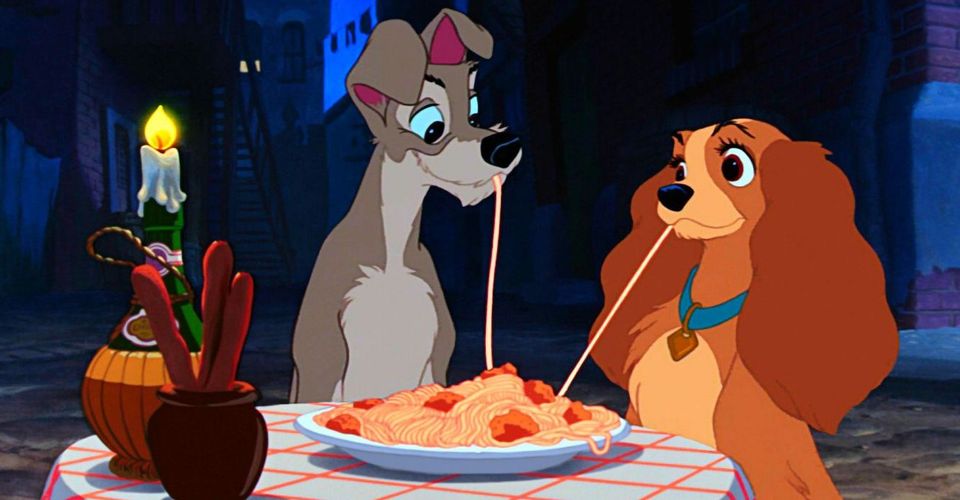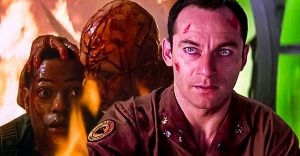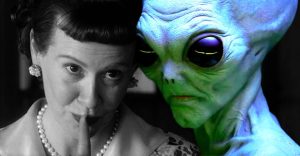Lady & The Tramp: 10 Things That Didn’t Age Well

In terms of romance, it is difficult to find a Disney film that is more hearts and flowers than Lady and the Tramp. The 1955 animated classic set the gold standard for true love between two characters from opposite sides of the tracks. The actual story isn’t groundbreaking but what made it so beloved were the two dogs at the heart of the movie.
Looking back, however, there are aspects that haven’t exactly stood the test of time. Disney seems to agree, as evidenced by the content warning in front of the movie that now appears on their streaming service. With the recent live-action remake, it seems as good a time as ever to reflect back on the original and comment and what hasn’t aged well.
10 “The Siamese Cat Song”

As beloved as the music in Lady and the Tramp is, one particular song is not remembered as fondly. When two Siamese cats visit Lady’s home, the pair wreak havoc by making a mess and framing everything on the poor dog.
By making these Siamese cats racist caricatures of the Asian community, the audience is fed only negative, anti-Asian stereotypes. It seems as if Disney realized just how outdated its depiction was because they opted to remove the song completely from the 2019 live-action remake.
9 Pedro The Chihuahua

During Disney’s Golden Age in the 1940s and 1950s, the studio was known to include oversimplified depictions of racial minorities, and Lady and the Tramp, unfortunately, has its fair share. After Lady runs away and winds up in the pound, she meets a diverse group of canines including a brown chihuahua by the name Pedro. Because chihuahuas hail from Mexico, Pedro does too; the little dog has an exaggerated Mexican accent and lacks any other personality trait.
He even spouts a laughably long, stereotypically Hispanic-sounding name when mentioning his sister. Now that over sixty years have transpired since its release, this representation is objectively emblematic of the anti-Mexican sentiment that was common in American media at the time. Today, Mexican people still face discrimination, of course, but it is safe to say that one would be hard-pressed to see this egregious racist representation on screen.
8 Boris the Borzoi

A dog that Lady encounters at the pound provides yet another example of a racial stereotype that is severely outdated. Boris is a borzoi (also known as a Russian wolfhound) and encompasses what Americans at the time thought Russians were like. Boris has a prominent Russian accent, waxes philosophy, and acts nostalgic; he even quotes classic Russian literature at one point.
Looking back at the sociopolitical context surrounding the time of the movie’s release, the United States was in the middle of the Cold War scare and so it should come to no surprise that Disney would portray Eastern Europeans in such a simplistic manner.
7 “He’s a Tramp”

After “The Siamese Cat Song”, this little number has raised the most eyebrows. One of the many dogs Lady meets at the pound is a streetwise Pekingese named Peg who proceeds to tell her all about Tramp’s colorful history with other female dogs.
The way in which “He’s a Tramp” shames the dog for exploring his sexuality feels outdated and the song is out of place in an otherwise sweet children’s movie. Audiences have come to realize the potentially harmful message that a song about shaming someone for their romantic or sexual lives can send.
6 The Racially Homogenous Cast

The last decade or so has seen a significant increase on the part of high-profile companies and individuals attempting to be more race-conscious. There has been a demand to make the media we consume more representative of the diverse populations that make up America. This was not the case in 1955 when Lady and the Tramp was made.
The entire cast of human characters is made up of people who are white. Disney is trying to right this wrong with the film’s live-action remake in which Jim Dear and Darling are depicted as an interracial couple. The cast and crew are also made up of more people of color.
5 Tony & Joe

The most memorable scene from Lady and the Tramp is undoubtedly the spaghetti scene between the two star-crossed canine companions. Tramp takes Lady to a local Italian restaurant for a special dinner date. The problems become apparent when the restaurant staff is introduced; Tony and Joe are oversimplified stereotypes of Italian Americans, from their accents to their comically thick mustaches.
Also worth noting is that the dish of spaghetti and meatballs would not have been available to the average Italian in the 1950s, as beef and pork were extremely expensive. To top it all off, Tramp makes an offhand comment about the duo’s thick accents and their unintelligible English. All in all, this is not the most nuanced or authentic depiction of Italian Americans in cinema.
4 Lady’s (Lack Of) Personality

Lady and the Tramp has aspects about its story and characters that are reflexive of the conservative ideals of the time. Women’s rights hadn’t progressed as much as they would in the following decades and the role of women in society was much more narrowly defined, as they were usually relegated to the domestic sphere. Disney movies were responsible for perpetuating these beliefs, and Lady’s character is a prime example.
Throughout the film, she never exhibits any true ambition, strength, or independence and appears content to wait around for a male dog like Tramp to come and lift her off her paws. While some women may be happy and fulfilled in this kind of domestic role, it certainly would have been beneficial to have seen a female protagonist with more clearly defined ambition.
3 Lady’s Pregnancy

Younger children watching Lady and the Tramp are entertained and charmed by the simple love story at its core but it is only with repeated viewings that certain mature themes begin to sink in. For instance, there is a beautiful sequence after their spaghetti dinner in which the two dogs spend the night together on a grassy hilltop overlooking the city.
The film cuts to the following morning, and it is later revealed Lady is pregnant. The implication is that Lady and Tramp did more than just cuddle that fateful night. Of course, this is subtle enough to fly over the heads of most children but it is difficult to see a scene like this in a contemporary animated film intended for kids.
2 Tramp’s Misogynistic Behavior

From when viewers first meet Tramp until the end of the film that sees him as a doting father, the mutt undergoes quite the transformation, and scattered throughout the film are hints and clues into his past. The entire city appears to be aware of his womanizing ways and his inability to settle down, but all of that changes when Tramp meets Lady.
She is determined not to end up as just another one of Tramp’s girlfriends, and Tramp seems to want to move on from her until he has a change of heart. This in turn sends a toxic message to young audiences that they can change someone, and that it is more socially acceptable for a man to date around than it is for a woman.
1 Yet More Cultural Stereotyping

The oversimplified cultural stereotyping in Lady and the Tramp didn’t stop with the Siamese cat song. Nearly all of the dogs Lady meets at the pound are caricatures of where their respective breeds came from. There’s Pedro the Mexican chihuahua and Boris the Russian borzoi but there are also Bull the English bulldog and Dachsie the German dachshund.
Bull speaks with a heavy cockney accent and Dachsie with a distinct German one. Instead of creating side characters with more nuance and complexity, the filmmakers took an easier route and made Bull and Dachsie exaggerated representations of England and Germany.
About The Author















